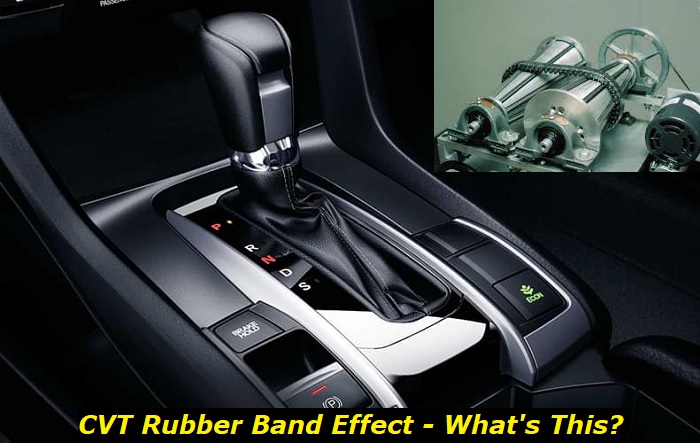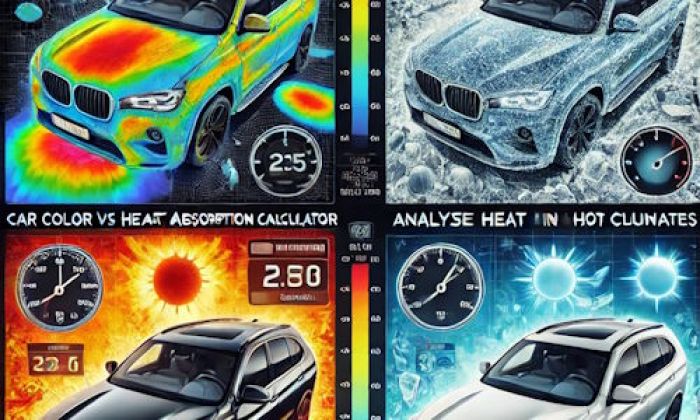A lot of car manufacturers turned from a traditional automatic transmission to alternative technologies like DCT units of CVT transmissions. Both are not as durable as automatic transmissions but allow drivers to economize on fuel and get a smoother ride. Well, it depends on the model of the transmission in question, of course.
Rubber band issues in CVTs highlights
- Average mileage:100,000-110,000 miles
- How serious it is:Urgent problem
- Possibility of repairs:Possible
- Price for repair:$1,000-$2,000
- Labor time:10-16 hours
- Can you drive?Carefully
- Common reasons:CVT slipping, control module is freaking out, CVT system is worn out.

CVT rubber band effect - what's this?
To understand what the rubber band effect in a CVT unit is, you should know at least primitively what this transmission is. Basically, it's two conical elements that are connected with a rubber band. One conical element is connected directly with the engine while the other one receives the power from the first element through the belt and then transfers this power to the wheels. This is a very primitive explanation of how modern CVT works because there are a lot of details that are too hard to explain within this article.
So, the rubber belt basically runs along two conical elements and this allows the transmission to adjust to the current road conditions. This construction is not bad and it's actually very smart but it has some disadvantages.
One of the clear drawbacks is the rubber band effect which is exactly the following:
- when you press the gas pedal hard, you will expect the wheels to spin immediately and accelerate the car very fast;
- but with the CVT transmission, this will not happen, the engine will rev up immediately but the power will not be transmitted to the wheels at the same moment;
- your CVT transmission will take some time and only then gradually will get this power from the engine to the wheels;
- it may be very annoying, especially in some cases where you need quick acceleration to avoid collisions or other road accidents;
- the rubber band effect is called that because a lot of people think it's all about the stretching rubber belt but it's not true;
- the effect occurs because the electronic controls of the transmission protect it from damage and don't allow sharp torque gain;
- you may understand it as the slipping clutch in a traditional transmission - but this effect is not about transmission damage, anyway;
- basically, the rubber band effect tells you that you do something wrong and the car has to protect itself from some abuse.
We know that many people take this rubber band effect as a normal thing - just the way the transmission works. But it's not completely true. The effect means that your transmission activates some ways to protect itself from damage. If something goes wrong and this protection is not activated, you may get into trouble.
CVT transmissions are not eternal. They have a shorter lifespan than any other transmission type. So, you should be careful with any effects that show some discomfort in the way your CVT works.
What problem can the CVT rubber band issue indicate?
In most cases. This effect doesn't indicate any special problem. It just tells you that the transmission is taking steps to protect itself and avoid serious issues. But if you understand that your transmission "slips" almost any time you press the gas pedal, things may be not so good.
First of all, you should make some tests to ensure there is a problem. Try driving your vehicle in different styles and see when the engine revs up but the car doesn't accelerate immediately. If this happens only when you sharply press the pedal and it takes just a short while for the transmission to adjust to the situation, it's just how the CVT should work, everything is fine.
If you see the following symptoms, better have the vehicle inspected by a professional:
- the CVT slips quite often and the vehicle seems to be not really responsive to the gas pedal;
- once you press the gas pedal, the tachometer arrow immediately twitches, then comes back to normal;
- the engine revs up quite a lot and only after that the vehicle starts accelerating even if you don't press the gas pedal sharply;
- it takes a lot of time for the transmission to start accelerating your car after the engine revs up;
- the car feels jerky when you try to accelerate;
- there are abnormal sounds from under the hood when you try to accelerate;
- the check engine light comes on the dash and the codes are related to the transmission.
When your CVT acts like that, it means the transmission is going to die soon. In most cases, this happens because of two things: aggressive driving or high mileage. Also, the transmission may have been overheated. This means that the transmission will lose its preciseness and will work incorrectly at most times.
Well, there is one more indicator that the rubber band effect issue tells you about the bad things happening with the CVT. If your vehicle hadn't been so sluggish and unresponsive before but at some point, it got this rubber band effect problem, you should be careful and pay attention to the transmission.
Can you do something with the rubber band effect issue?
If you got a new car with the CVT but you had only driven cars with other types of transmissions before, you should get used to the vehicle. Don't make any conclusions before you understand how it works. Once you get used to how the CVT acts in your car, you'll be OK with it.
But if it keeps annoying you, unfortunately, you can't do anything with the rubber band effect issue. This is part of the CVT type of transmission and it will always be there.
On the other hand, if the issue is connected to some problem like a stretched belt or worn-out transmission parts, you can deal with it by repairing or replacing your transmission. Have the vehicle inspected by a professional or drive another vehicle of the same brand and model and see if it differs much from how your car acts on the road.
Only try to solve the problem if there is a problem. Otherwise, you may invest thousands of dollars and get nothing in the end.
How to avoid problems with your CVT?
Here are some of the good tips that will help you prolong the life of your transmission and avoid expensive issues:
- proper regular maintenance is important for the CVT;
- have the transmission checked at least once every three years;
- warm up the transmission before you drive - press brakes, put it in D and wait for 1 minute, then drive;
- don't drive at a constant speed for too long - change the speed on highways every 20-30 minutes;
- expect your transmission to die anywhere between 100,000 and 140,000 miles.
Unfortunately, most CVTs will be dead until they manage to reach 150K miles. After they are dead, repairing them is not the best option. In most cases, expensive replacement is the only proper option to get your car back on track.
Don't forget to pay attention to how your transmission works and have it checked once something goes wrong with the unit.
Why is CVT a bad option of transmission?
We don't like CVTs and we've clearly stated that in many of our previous articles. Even though dual-clutch transmissions are not much more durable, even they are better because they allow owners to have them repaired. CVTs are a kind of disposable transmission - once something goes wrong, they are dead and need replacement.
Also, we haven't seen any vehicle with more than 200,000 miles on it that would still have its OEM CVT without any expensive repairs. Also, we know cases when CVTs fell apart within 10-20 thousand miles after they were repaired. This is awful!
So, we don't recommend buying used cars with CVT transmissions and mileage of more than 50-60K miles. Otherwise, you can just invest thousands of dollars and still get bad durability and reliability of the transmission.
Final thoughts
If you own a car with a CVT transmission, be careful. Its rubber band effect is a natural flaw of the unit. But it may also represent several bad issues with the transmission. Always pay attention to how the transmission performs and what changes in its performance. If you notice any changes, immediately have the CVT checked by a professional.
Also, don't forget that this tender unit needs a proper driving style and some considerations. Read more about CVTs and their demands and you will be OK with your vehicle for many miles and years.
About the authors
The CarAraC research team is composed of seasoned auto mechanics and automotive industry professionals, including individuals with advanced degrees and certifications in their field. Our team members boast prestigious credentials, reflecting their extensive knowledge and skills. These qualifications include: IMI: Institute of the Motor Industry, ASE-Certified Master Automobile Technicians; Coventry University, Graduate of MA in Automotive Journalism; Politecnico di Torino, Italy, MS Automotive Engineering; Ss. Cyril and Methodius University in Skopje, Mechanical University in Skopje; TOC Automotive College; DHA Suffa University, Department of Mechanical Engineering






Add comment